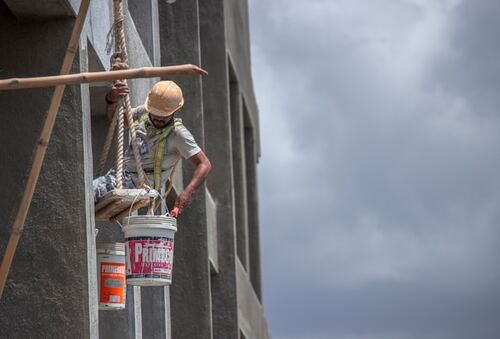How are large-scale painting projects completed efficiently, especially those in difficult-to-reach areas? How do companies in Sydney and other cities reduce costs and time while ensuring high-quality work? The answer often lies in rope access painting, which has revolutionised complex projects.
But what exactly makes this technique so effective, and how does it offer significant advantages over traditional methods? This article will explore how rope access painting minimises expenses and project time.
The Efficiency of Rope Access Painting
Abseiling painting is one of the critical reasons rope access painting is gaining popularity in Sydney and beyond due to its remarkable efficiency. Workers can directly access difficult-to-reach areas, such as high-rise buildings or industrial structures, without needing large scaffolding setups. The minimal setup time, with no scaffolding or heavy machinery required, significantly reduces preparation time.
The increased manoeuvrability also allows for swift project completion, cutting overall time. In Sydney’s bustling urban environment, this speed and efficiency are vital for meeting tight deadlines without compromising quality or safety.
How Rope Access Painting Lowers Costs
Cost is always a significant factor in complex projects, and this method offers notable savings. But what are the main contributors to cost reduction? These factors make rope access painting a cost-effective solution, especially for large commercial or industrial projects in Sydney.
- Less equipment: Since scaffolding, cranes, and other bulky equipment are not needed, the costs associated with renting, transporting, and maintaining these items are eliminated.
- Reduced labour: This method requires fewer workers, making the process more streamlined and efficient.
- Minimal disruption: This painting process creates less disruption to the surrounding environment, meaning businesses or residents can continue their operations and avoid costly downtime.
Versatility in Complex Environments
Rope access painting offers adaptability, making it suitable for many structures, from high-rise buildings to industrial facilities and bridges. Unlike traditional methods that rely on large, disruptive equipment, this approach requires minimal space, making it ideal for confined or crowded areas. It also allows workers to reach intricate and hard-to-access spots, ensuring even and thorough reach.
Sydney’s diverse architectural and industrial environments often require this level of precision, making rope access an excellent choice for projects in the city. Its versatility and minimal footprint make it the perfect solution for complex structures that demand efficiency and accuracy.
Safety and Compliance Standards
The technicians are highly trained and certified to meet the highest safety standards. Without the need for scaffolding or heavy machinery, accidents involving these larger pieces of equipment are reduced. Besides, rope access methods are designed to comply with local safety and building regulations, ensuring that projects in Sydney and other cities meet the necessary legal requirements. This emphasis on safety makes it efficient, safe, and reliable for complex projects.
Environmental Benefits of Rope Access Painting
It saves time, reduces costs, and contributes to environmental sustainability. Minimising the need for large machinery and scaffolding reduces energy consumption and lowers the project’s carbon footprint. The method also results in less disruption to the surrounding environment, preserving natural habitats and reducing waste.
Abseiling painting is not just a method for saving time and reducing costs—it’s a smarter, more effective approach to tackling complex projects. The method’s emphasis on safety, compliance, and adaptability further solidifies its value for large commercial and industrial projects. As more companies recognise these benefits, this painting technique is set to shape the future of efficient and cost-effective project management.




